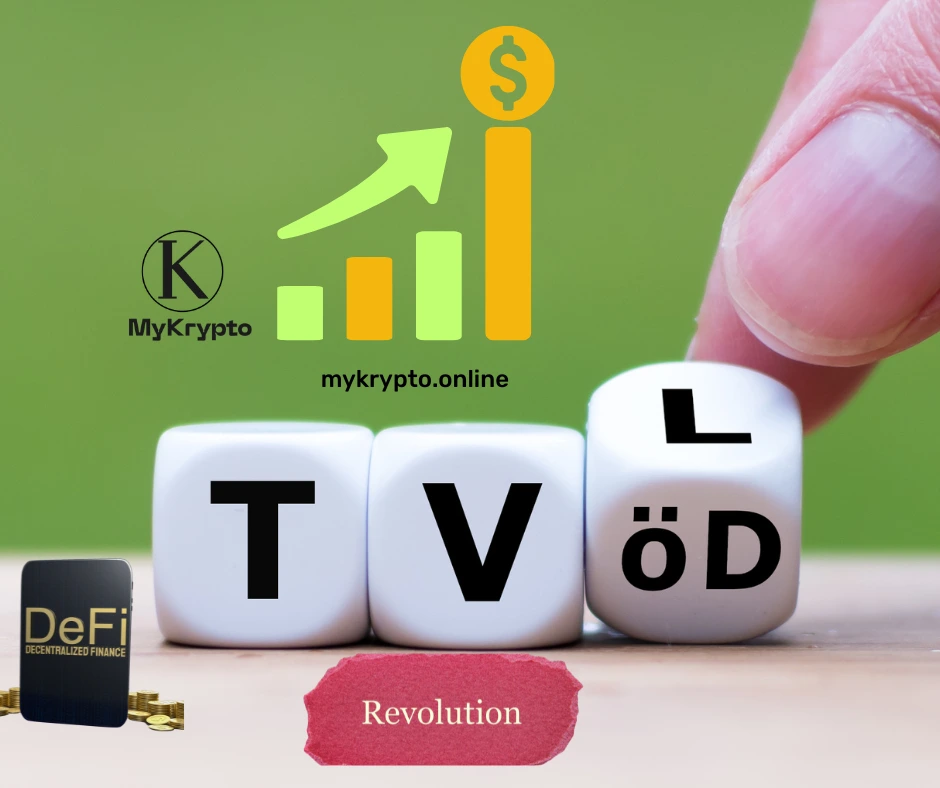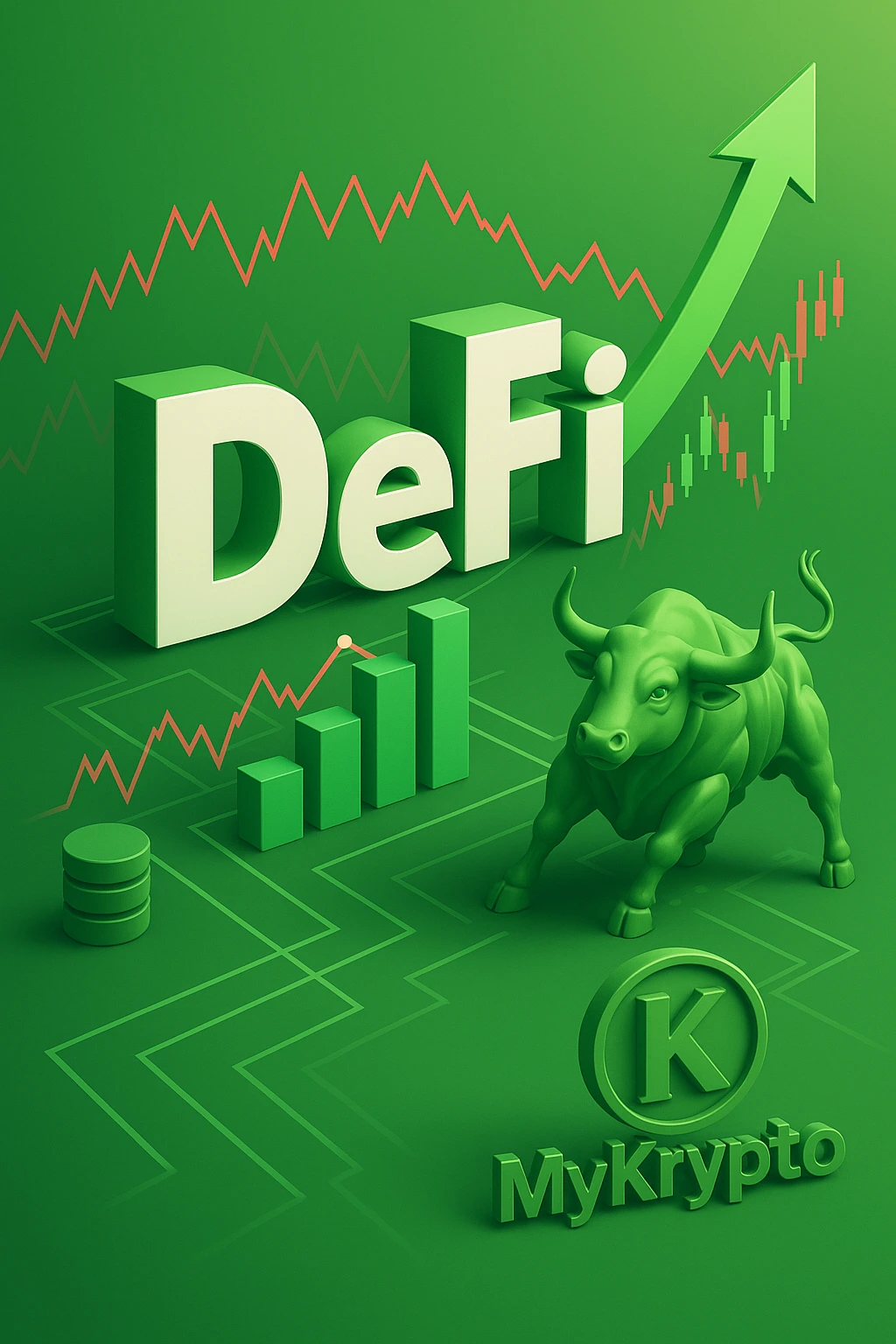INTRODUCTION: Real Yield Revolution
Welcome to MyKrypto!
For years, Total Value Locked (TVL) has been the undisputed king of decentralized Finance (DeFi) metrics. It was the headline number flashed across every news site and dashboard, a convenient shorthand for the health and dominance of a protocol. A high TVL meant safety, adoption, and success—or so we thought.
Before going ahead, for those who don’t know about DeFi and TVL, here is a short introduction below:
What is Total Value Locked (TVL) in DeFi?
Total Value Locked (TVL) is the total amount of crypto assets deposited (or “locked”) inside a DeFi protocol’s smart contracts. It represents the capital that users provide for lending, staking, liquidity pools, or other services.
Think of it as:
-
In a bank, deposits show how much trust people have in that bank.
-
In DeFi, TVL shows how much trust and capital users have placed in a protocol.
TVL is usually denominated in USD, but it’s actually calculated from the number of tokens (ETH, stablecoins, BTC, etc.) locked multiplied by their current market prices.

Now back to our topic, Decentralized Finance (DeFi) has grown at breakneck speed since 2020, with billions of dollars locked into smart contracts across lending platforms, decentralized exchanges (DEXs), and yield aggregators. Traditionally, the health and popularity of a DeFi project has been judged by Total Value Locked (TVL)—a metric representing how much capital is deposited in a protocol.
The brutal bear market of 2022 exposed the fragility of this single-minded focus. TVL, it turns out, is often a mirage. It can be inflated by mercenary capital chasing unsustainable token emissions, bloated by the inherent leverage of lending protocols, or artificially pumped by protocols owning their own liquidity. Investors who chased TVL alone were left holding the bag when “yields” vanished, revealing themselves to be nothing more than inflationary token prints.
But TVL alone tells only part of the story. A new movement is emerging within the space: the Real Yield Revolution, which focuses not just on how much money is locked but whether protocols generate sustainable, real-world revenue that is distributed back to users. In this blog, we’ll explore what real yield means, why it matters, and how investors can assess it beyond the hype of inflated TVL numbers.
The Problem with TVL as a Metric
For years, TVL has been the go-to benchmark in DeFi rankings. However, it has significant limitations:
- Inflated Numbers – TVL can be artificially boosted by liquidity mining incentives where protocols offer unsustainable token rewards to attract deposits.
- Not Linked to Profitability – High TVL doesn’t necessarily mean a protocol is profitable or sustainable. A protocol could hold billions but burn through emissions just to keep liquidity providers.
- Lacks User Quality Insights – TVL doesn’t distinguish between sticky, loyal capital and “mercenary liquidity” that leaves when incentives dry up.
This has led to cycles of boom and bust in DeFi, where protocols rise quickly in TVL and collapse once rewards taper off.
Enter the Real Yield Revolution
The Real Yield movement shifts focus from raw deposits to actual revenue generation and distribution. Instead of relying on inflationary token emissions, protocols return revenue that comes from organic usage—such as trading fees, borrowing interest, or liquidations.
Key principles of Real Yield:
- Revenue-backed Rewards: Yields are derived from real protocol income, not unsustainable token printing.
- Sustainability: Protocols aim for long-term viability rather than short-term liquidity attraction.
- Investor Confidence: Distributing real income builds trust with users and investors.
Examples of Real Yield Protocols
- GMX (Perpetual DEX) – GMX shares 30% of trading fees in ETH/AVAX with stakers of its token (esGMX and GLP holders). This income is based on actual trading activity, not token emissions.
- Synthetix (SNX) – Stakers earn from trading fees generated by synthetic asset exchanges on its protocol.
- Lido Finance – Provides staking rewards from real Ethereum validator performance, distributing ETH-denominated yield to users.
- Uniswap (pending fee switch) – Although not fully activated, its design allows fees from trading volume to eventually flow back to UNI holders.
These protocols stand out because rewards are sustainable, tied directly to real user activity.

Why Real Yield Revolution Matters
- Long-Term Sustainability: Unlike inflationary models, real yield aligns incentives with organic protocol growth.
- Better Risk Assessment: Investors can differentiate between “hype projects” and real businesses.
- Attracting Institutional Capital: Traditional investors seek predictable cash flow, which real yield offers.
- Reduced Ponzi Dynamics: Rewards don’t depend on constantly onboarding new participants.
How to Assess Real Yield in DeFi: A Practical Framework
Moving beyond TVL requires a new set of analytical tools. Here’s how you can critically assess a protocol’s Real Yield claims:
1. Follow the Money: Revenue vs. Emissions
This is the most critical step. You need to distinguish between revenue and inflation.
-
Where to look: Use data platforms like Token Terminal, DefiLlama (which has a great revenue/fees section), and Dune Analytics dashboards created by the community.
-
What to calculate: Find the protocol’s annualized fees/revenue and compare it to the annualized value of tokens distributed to stakeholders.
-
The Key Question: Is the protocol generating enough fees to cover the yields it’s paying? If emissions are higher than revenue, the yield is subsidized and likely unsustainable.
2. Scrutinize the Yield Source
-
Is the yield paid in a native token or an exogenous asset? A yield paid in ETH is fundamentally different from a yield paid in a protocol’s own token, which carries infinite inflationary risk.
-
What activity generates the fees? Is it from organic trading volume on a dex? Interest from money markets? Or is it from leveraged farming and ponzinomics within the protocol’s own ecosystem? The former is sustainable; the latter is not.
3. Analyze the Business Model Quality
-
Fee Structure: Does the protocol have a clear and logical fee mechanism? (e.g., 0.01% of every swap, 10% of interest paid to lenders).
-
Value Capture: How effective is the protocol at capturing the value it creates? A protocol with massive usage but no fee mechanism (or a poorly designed one) cannot generate real yield.
-
Competitive Moats: Does the protocol have a durable competitive advantage (e.g., first-mover status, superior technology, strong brand) that will allow it to maintain its revenue streams?
4. Evaluate the Sustainability and Tokenomics
-
Token Holder Alignment: How is the revenue distributed? Is a meaningful percentage directed to token holders, or is it mostly siphoned to the treasury? Look for protocols where stakers or lockers are the primary beneficiaries of the fees.
-
Treasury Management: A strong treasury denominated in diversified assets (not just its own token) provides a runway for development and a buffer during bear markets, supporting long-term sustainability.
5. Look for “Proof of Spend”
- This is a concept popularized by DeFi analyst @wacy_time1. It asks: “Are people consistently spending real money (e.g., ETH, stablecoins) to use this product?” High gas fees on Ethereum, for example, are a form of “proof of spend” that demonstrates users see enough value in a transaction to pay a real cost for it.
- This is a powerful, on-chain verified signal of demand.
Protocols Leading the Real Yield Revolution
Several protocols have become poster children for this movement:
-
GMX: Pays yield to stakers in ETH and stablecoins from trading fees and leverage trading losses.
-
Gains Network: A Similar model to GMX, paying yields in DAI from perpetual trading fees.
-
Uniswap: While not yet distributing fees to holders, its immense fee generation demonstrates the potential for real yield should governance ever activate it.
-
Lyra Finance & Synthetix: Options and derivatives protocols that generate fees from traders and market makers.
Real Yield vs Traditional Finance (TradFi)
Interestingly, Real Yield Revolution in DeFi is starting to resemble traditional financial models:
- Stock Dividends → Protocol Fee Sharing
- Bond Coupons → Lending Interest in Stablecoins
- Revenue Reports → On-chain Analytics
This convergence is essential for bringing institutional adoption. Investors accustomed to cash flow and dividends find real yield a familiar, more trustworthy structure.
The Future of Real Yield in DeFi
The Real Yield Revolution is more than a trend—it’s a necessary evolution. As the market matures:
- Projects with fake, unsustainable TVL will fade away.
- Protocols with real yield models will attract “sticky” capital.
- Regulatory clarity may further boost the adoption of revenue-based token models.
- DeFi may evolve into a parallel version of traditional finance, but with transparent, global, and accessible structures.
Final Thoughts
TVL may continue to be a popular headline number, but it’s no longer enough to judge a DeFi project’s worth. The future belongs to protocols that create real economic value, reward users with sustainable income, and operate like businesses rather than Ponzi schemes.
The Real Yield Revolution isn’t just about higher returns—it’s about building trust, longevity, and true financial innovation.
Pro tip for investors: Before chasing the next “DeFi gem,” ask yourself: Where is the yield coming from, and is it sustainable?




